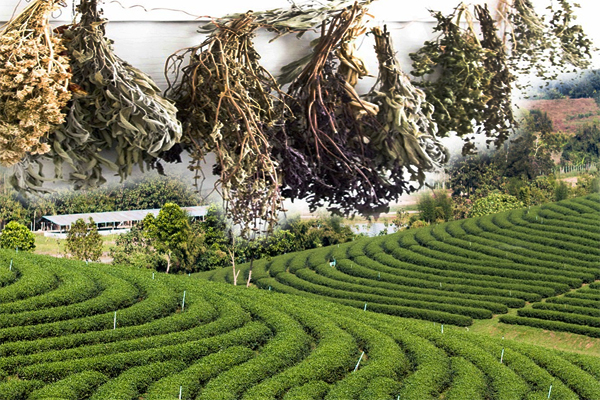Traditional Tea Manufacture
The tedious, long-drawn-out details of traditional tea manufacture, of the repeated, meaningless, tossing back and forth and Chinese juggling with the abused tea leaves, are but too familiar to students of the history of tea subject: and too disappointing also, when we are moved to ask --
Why all this manipulation?
What is the nature of the chemical changes which take place?
A tea's type is determined by the processing which it undergoes. Leaves of Camellia sinensis soon begin to wilt and oxidize, if not dried quickly after picking. The leaves turn progressively darker as their chlorophyll breaks down and tannins are released. This process, enzymatic oxidation, is called fermentation in the tea industry, although it is not a true fermentation. It is not caused by micro-organisms, and is not an anaerobic process.
The next step in processing is to stop oxidation at a predetermined stage by heating, which deactivates the enzymes responsible. With black tea, this step is executed simultaneously with drying.
Without careful moisture and temperature control during manufacture and packaging, the tea will grow fungi. The fungus causes real fermentation that will contaminate the tea with toxic and sometimes carcinogenic substances, as well as off-flavors, rendering the tea unfit for consumption.
Tea is traditionally classified based on the techniques with which it is produced and processed.
 White tea: Wilted and unoxidized
White tea: Wilted and unoxidized
 Yellow tea: Unwilted and unoxidized, but allowed to yellow
Yellow tea: Unwilted and unoxidized, but allowed to yellow
 Green tea: Unwilted and unoxidized
Green tea: Unwilted and unoxidized
 Oolong: Wilted, bruised, and partially oxidized
Oolong: Wilted, bruised, and partially oxidized
 Black tea: Wilted, sometimes crushed, and fully oxidized
Black tea: Wilted, sometimes crushed, and fully oxidized
 Post-fermented tea: Green tea that has been allowed to ferment/compost
Post-fermented tea: Green tea that has been allowed to ferment/compost

Education
Discover where the capital of the United States has been located...In Memory of Myron Angus - One Truly Amazing Man
Many people found inspiration through Myron Angus, a talented handicapped artist of international fame, who created all his works through painting with his mouth. He has mastered that fascinating technique of painting with the brush held between his teeth, and had ability to talk and paint at the same time. A simple dowel-rod with a rubber tip held between his teeth and his determination made it all possible. This other way of doing things didn't just happen over night.
When Myron was about 7 years old, his parents were visiting the C.N.E. in Toronto, Ontario. There, they came across a man by the name of Bill Watson (Canadian author and journalist William Ritchie Watson) at one of the displays. He was autographing the book "My Desire" which he had written by holding a pen in his mouth, he had no arms. When Mr. and Mrs. Angus told him about their son, he autographed a copy of the book special for Myron. Then he told them to put a pencil between his teeth. Let him learn to control the pencil this way, then put him in school.

